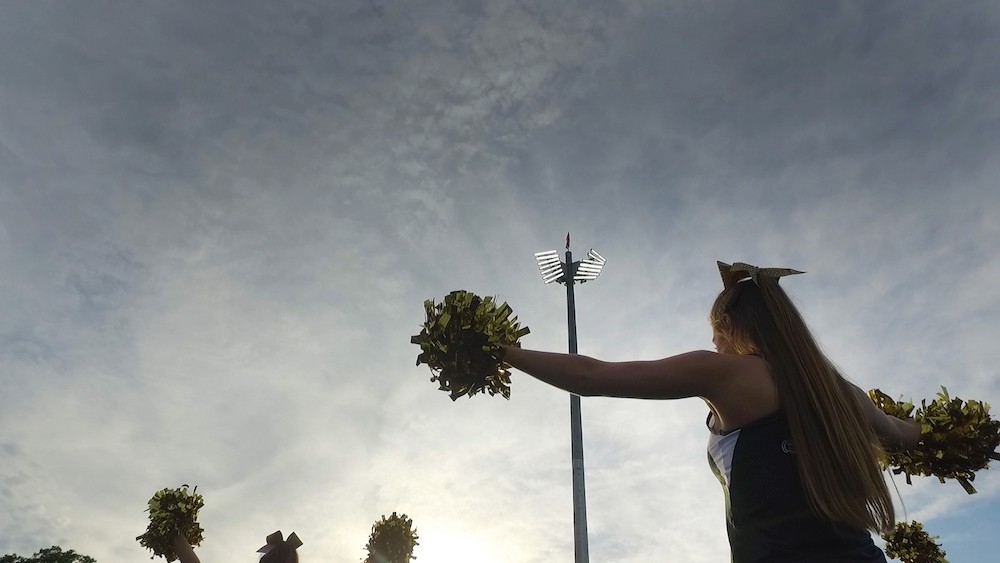DAAP grad Barry Hutzel helped design Qualite's GameChanger, a unique new sports lighting system. Photo/Craig Van Der Lende
'GameChanger'
DAAP grad puts 'design doing' into action with new sports lighting system
On May 24, 1935, Cincinnati’s Crosley Field illuminated for professional baseball’s first night game. University of Cincinnati alum Earl Payne, Eng. ’26, helped design that revolutionary lighting system — along with the original lighting layout for UC's Nippert Stadium.
More than 80 years later, another UC grad is helping to change the sports lighting game.
Barry Hutzel graduated from UC’s College of Design, Architecture, Art, and Planning in 1984 in the School of Design’s industrial design program.
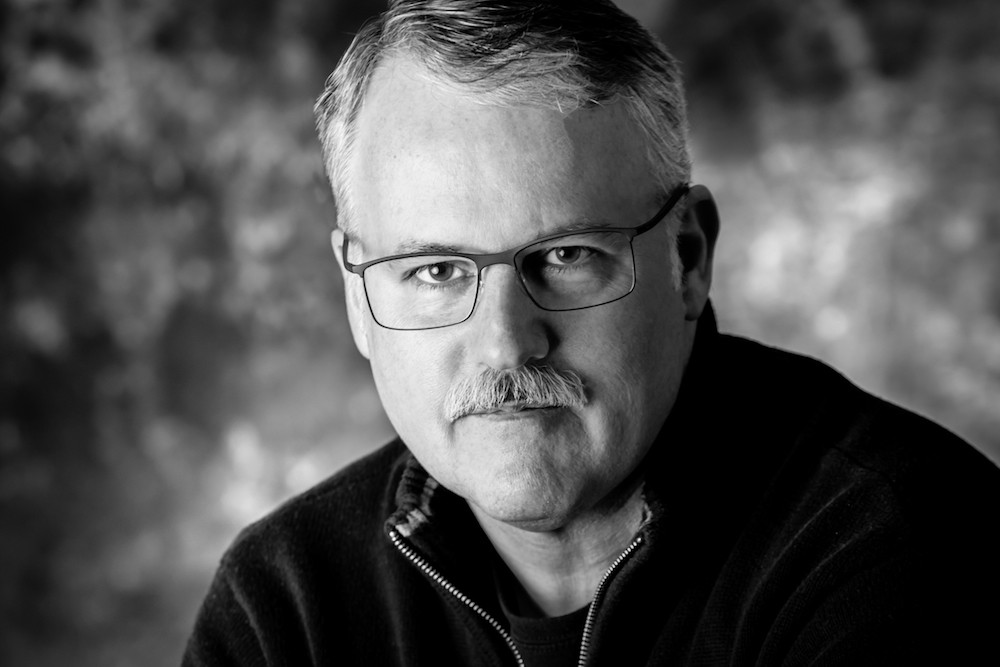
Professional designer Barry Hutzel studied industrial design at DAAP from 1979-84. Photo/Laura Veldhof Photography
“It was a creative awakening for me to be able to go to a school that good in my own backyard,” says Hutzel, a Reading, Ohio, native. “It’s hard to boil down the top one or two best things I got out of being a graduate from the industrial design program because there were so many. DAAP opened my eyes to a wider range of things for sure. I got to learn from professors and peers alike that came from all kinds of other walks of life.”
He has worked in design for more than 32 years, from Huffy bikes to an automotive parts manufacturer to a product design studio. Today he owns Bazza Design, a consultancy in Holland, Michigan. Bazza is something of a one-man band, with Hutzel alone employing a holistic approach to industrial and graphic design as well as brand and program management. One of his recent projects, the GameChanger LED Sports Lighting System, looks to revolutionize the way people enjoy outdoor sports and recreation.
It all started with Michigan-based company Qualite Sports Lighting LLC. They reached out to Common Sense Engineering (CSE), a Michigan engineering firm that specializes in lighting, about developing a new line of sports lights. When it became clear that the project would require an industrial designer, CSE suggested Hutzel. The two had collaborated over the years and went to work to help Qualite develop a revolutionary lighting system.
“I explained to the Qualite folks my extensive design process and how that would help them craft an outstanding product,” Hutzel says, showing them that he did more than just “create pretty pictures.” That process involved research, concept development, concept refinement and design release to bring this idea to life. “At the time they didn’t know everything I could do for them, which was awesome because once I showed them, they knew this would be a great partnership.”
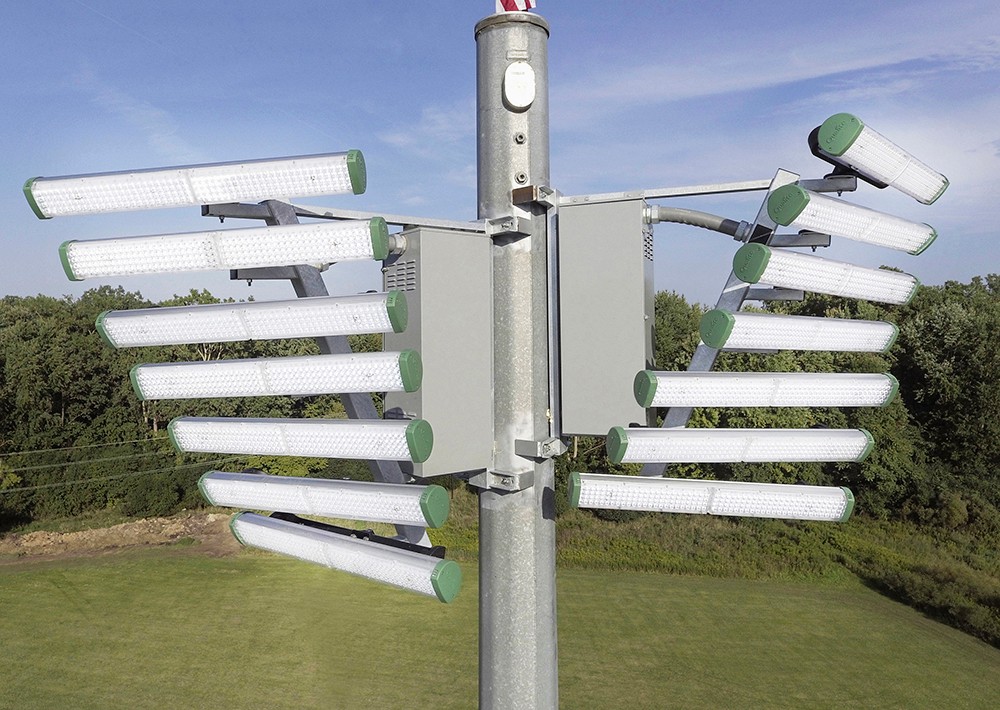
Photo/Craig Van Der Lende
GameChanger is an apt name for this unique light. Instead of the typical fixture in a round design, the Qualite light is made of modular, rectangular bars that are stackable, flexible and positional — a huge departure from others on the market. The system can be programmed remotely, with adjustments and scheduling controlled through an app. The LED lights are energy efficient and optimized for high-definition TV. Besides the circuit boards, every part is American-manufactured in Michigan, and they’re still less expensive than the competition by about half.
“Qualite’s 30-plus years of lighting experience coupled with our knowledge about the lighting and the optics of the lenses that we planned to design into the light was the best possible scenario where we could create a lighting system that would become patented and affordable. We knew we were on the road to something great,” Hutzel says.
The site of the first GameChanger installation couldn’t be more fitting. Qualite owner Eric Boorom’s alma mater Lumen Christi Catholic High School in Jackson, Michigan, had never experienced a home football game at night because their field didn’t have lights. (Ironically, “lumen” is Latin for “light” and, in physics, it measures brightness.)
Boorom donated the system to the school, volunteers helped install it and in August 2016, the Lumen Christi Titans hosted their first night game. And while the technology has certainly changed since Crosley Field was first lit up in 1935, the excitement lives on today.
“It was an awesome night to see them on for the first time,” Hutzel recalls.

The GameChanger lights illuminate at Lumen Christi for the first time. Photo/Craig Van Der Lende
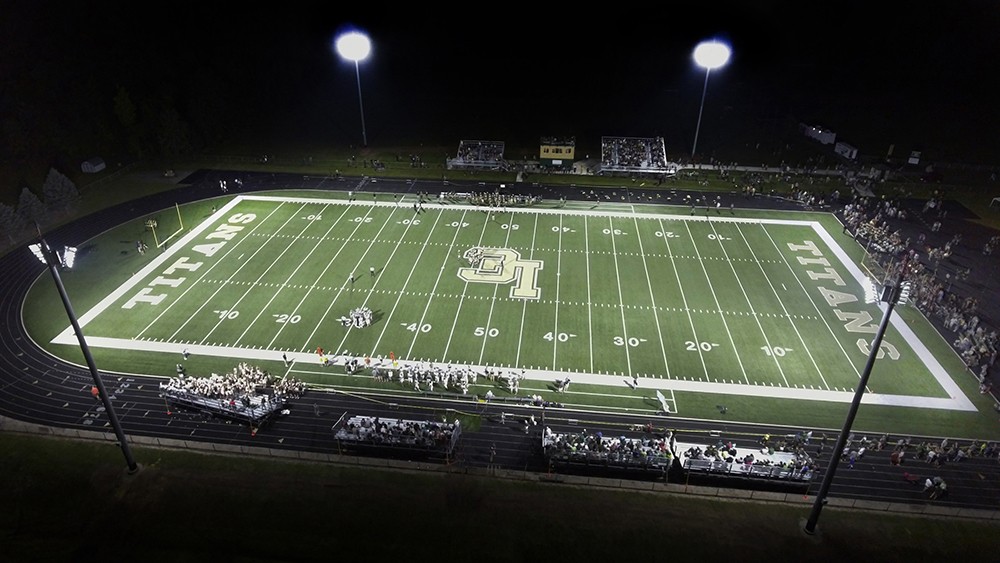
The Lumen Christi Titans play their first home night game. Photo/Craig Van Der Lende
Throughout the creation of the GameChanger, Hutzel worked with manufacturing, engineering, brand and marketing. As well as helping develop the light’s design, he used his graphic design experience to create imagery for Qualite's exhibits, advertisements and technical guides; he oversaw photo shoots and drone video work which led to overseeing the creation of a promotion video.
Some might call this process “design thinking.” Today, the term is something of a buzzword in higher education and the business world. It refers to the creative strategies designers use that can be applied across all disciplines within an organization. But for Hutzel, it’s something he’s been doing his entire career. He prefers the term “design doing,” citing a quote by Chris Nodd, a respected user-experience consultant:
“I prefer to talk about design doing rather than design thinking. The thinking part is essential. That’s where some creative new solutions to problems come from. But design has little value without implementation. Deciding what’s worth implementing, planning how that implementation will progress and tracking that progress through to release and beyond are key to actually delivering on the creative solutions.”
This spoke to Hutzel on many levels.
“Design thinking sets a structure for getting design done. But design doing is the implementation of that and overseeing that. That’s the meat of any design problem, product or development,” Hutzel says. “I’ve always been a doer. So that spoke to me pretty strongly, that I would be able to be involved in a project longer if I was more of the hands-on guy.”
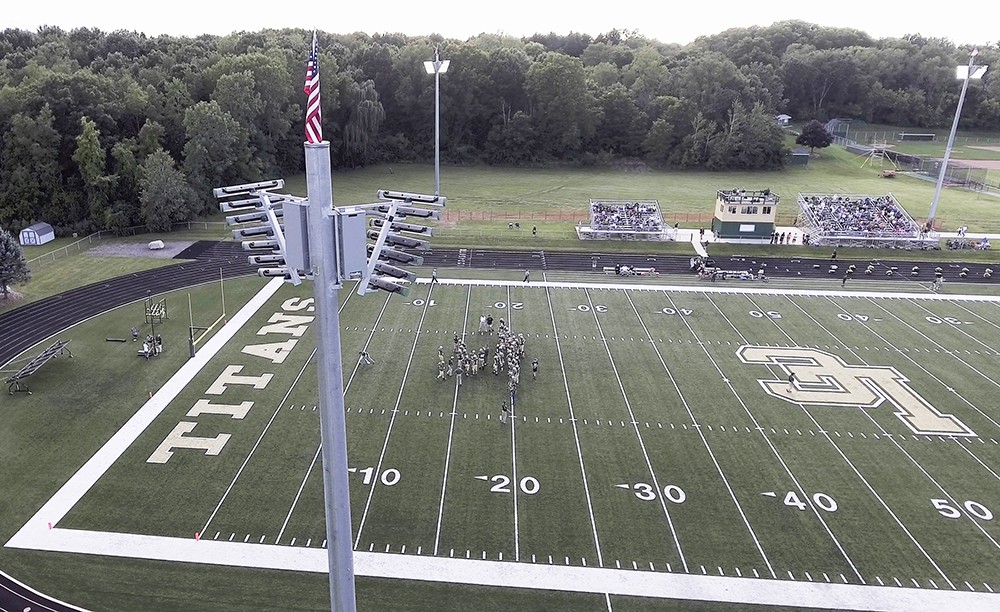
Photo/Craig Van Der Lende
He credits DAAP for his multidisciplinary approach to design.
“The ability to take what I love to do, which is draw and create, and put it into practical usage, that was the best thing about going to design school [at DAAP],” Hutzel says. “I was able to take what I love to do and turn it into a profession, and they fostered that.”
As Hutzel continues to put his “design doing” into motion with other projects, the lighting system is racking up awards. It was voted as the gold winner for innovation in the outdoor adventure category at the Edison Awards earlier this year. “In the industry of sports lighting, an Edison Award is truly a piece of gold,” Hutzel explains. “When we won the top award in our division out of 7,000 entries, Qualite was just ecstatic.”
The GameChanger was also selected as a featured finalist at the International Design Excellence Awards in the category of Commercial and Industrial Products, a premier international design competition sponsored by the Industrial Designers Society of America.
Meanwhile, the GameChanger reach continues to expand. The lights have been installed at Georgia State University’s new football stadium and will soon be installed at the 14-field Gateway Village Sports Complex in Grandview, Missouri, among other locations.
Perhaps one day the GameChanger lights will make their way to campus, where Hutzel’s designs could serve as a shining example of his UC education in motion, standing in the place where his journey began.
Read about another UC alumnus’ connection with night baseball.
Learn more about DAAP, The Myron E. Ullman, Jr. School of Design and its industrial design program.
What are other DAAP grads up to? Designing shoes, cars and much more.

